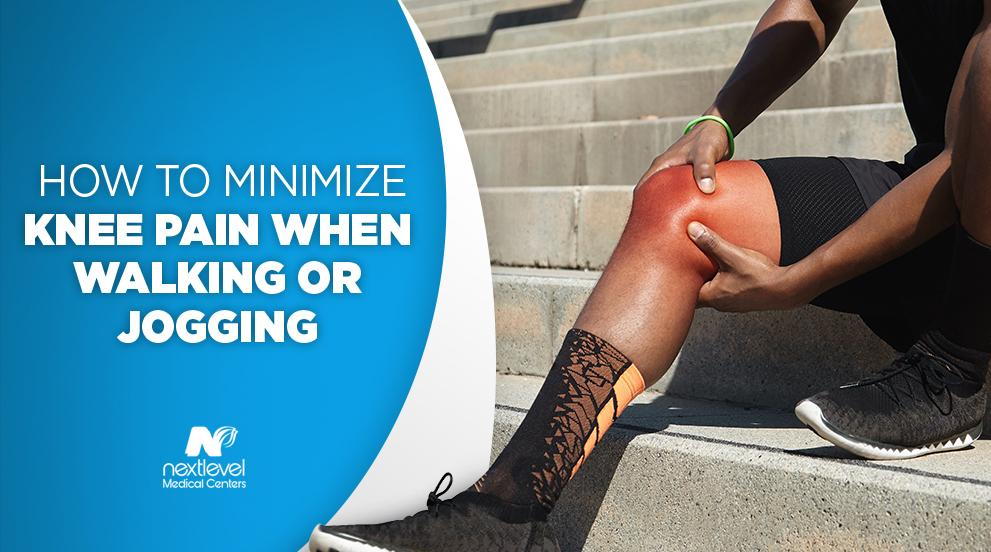
Knee pain is one of the most common forms of joint pain. It's prevalent amongst athletes, runners, and those who jog for exercise and fitness. Unfortunately, many common and popular exercises cause strain on the knees, and finding ways to overcome that strain can be a challenge.
Some measures can be taken to help mitigate the strain you experience while walking or jogging and reduce the damage done. With this article, we hope to shed some light on these preventative measures to make life a little less painful for those of you who enjoy a healthy jog or do a lot of walking.
If you're the kind of person who loves running or jogging, knee pain can be disheartening. You may face deteriorating joints that make it likely you'll need to find an alternative kind of exercise. You may also fear knee replacement surgery or other invasive procedures. Should you stop running, or is there something you can do about it?
Truthfully, everyone's situation is different. Your knee pain might be easily treatable and temporary, or it might be permanent damage that requires intensive treatment to handle. The best thing you can do is take steps to minimize stress on your joints while allowing them to heal as best they can.
Terrain Can Affect the Impact on Your Knees
There are plenty of people out there who enjoy a morning jog to get their daily cardio in. You see them running through parks, along sidewalks, and even down beaches with no sign of slowing down. You might even have a preferred jogging trail that enables you to exercise and enjoy the scenery and serenity.
Even if you are not a jogger, you will likely be walking along the same or similar terrain as they do. However, you might be surprised to know that your preferred jogging path or the routes you walk might be causing more harm than good when it comes to the health of your knees.
There are all kinds of terrain that people might be jogging or walking on that you might not have even given a second thought. Be it concrete, sand, dirt, or grass, you subconsciously compensate for different variables that affect how you traverse the environment in question. For example, some terrain will be harder on the joints but more stable for the rest of your leg, whereas others will be less stable but easier on the joints. The reality is that there is no perfect terrain for walking or jogging, but being aware can help mitigate any unwanted side effects.
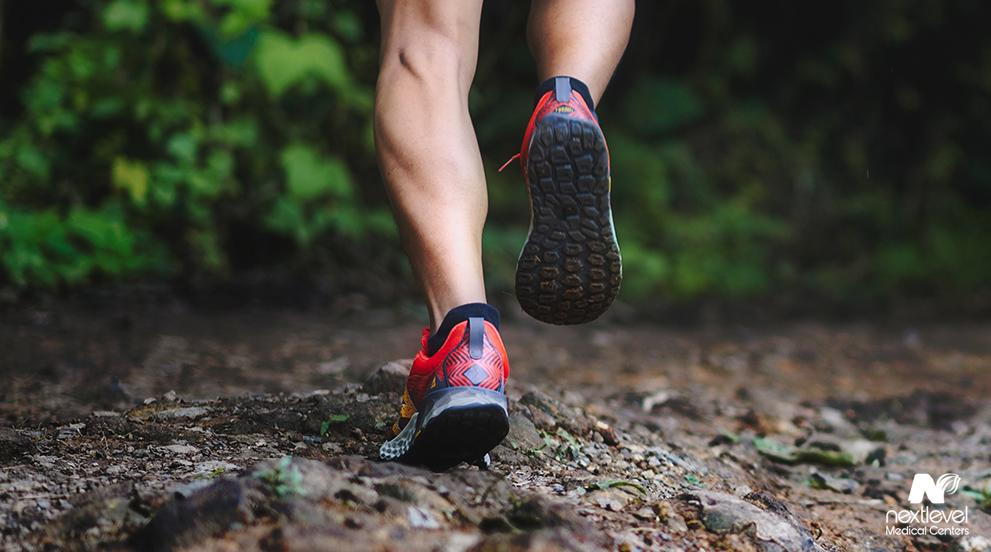
Your leg is made up of several bones and muscles, and the two that are affected by the terrain you are moving across are the joints and the Achilles tendon. Running on soft, uneven terrain like dirt, sand, or mud is easier on the joints since they are softer and should make knee pain less likely. Unfortunately, the uneven nature of this terrain is hard on the Achilles tendon and can cause pain around the ankles instead. Conversely, solid terrain like concrete and asphalt is easier on the Achilles tendon, but hard terrain will lead to more substantial impacts that reverberate back to the joint and exacerbate knee pain.
The type of terrain you are walking or jogging along is an unavoidable part of the experience. Grass surfaces or even treadmills might be more conducive to long-term knee health if you are a consistent runner or jogger. However, even if you stick to one terrain, you will still be wearing away at some part of your leg. Fortunately, there is more to mitigating knee pain than simply recognizing the terrain's effect.
Poor Form Can Lead to Knee Damage
When running, jogging, or walking, it is essential to maintain proper form or face the consequences. The proper form varies depending on the type of movement you are going through, but poor form, in any case, will exacerbate the impact felt by your joints and lead to worsened knee damage. The best form for jogging is as follows:
Engage your core and keep your line of sight forward.
Do not tilt your head down.
Do not slump your shoulders and instead draw them back.
Broaden your chest.
Keep your hands loose and allow your arms to swing without crossing them in front of you.
Avoid hitting the ground with your foot and aim for a midfoot drop instead.
Maintaining this form will help to keep your body from taking any unnecessary damage while jogging. However, some more nuanced steps are involved if you are using a treadmill for your jog.
Maintain the same core engagement, relaxed arms, line of sight, head positioning, and shoulder positioning as above.
Keep your spine straight.
Take small steps and maintain a short stride.
Avoid hanging onto the rails unless you have balance issues.
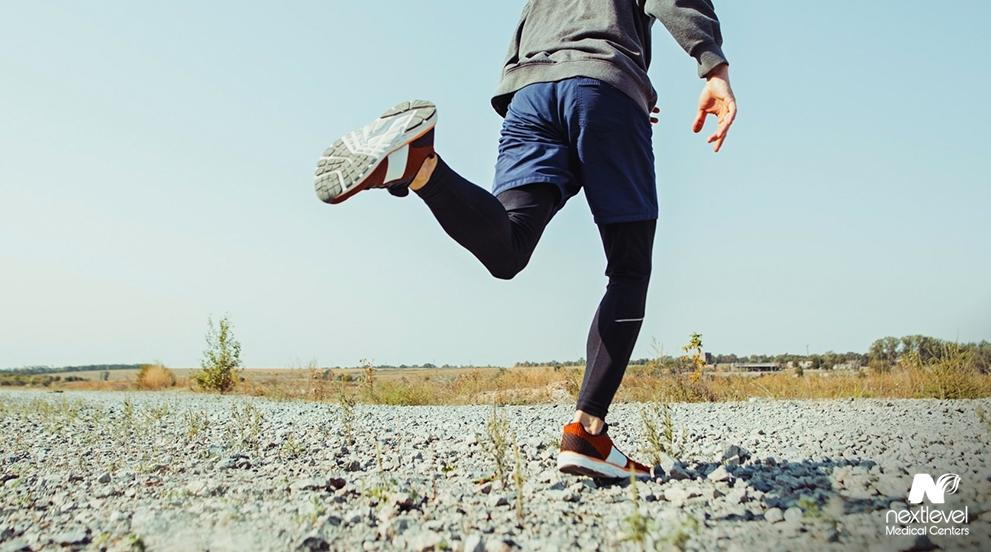
As we previously discussed, if you are running on traditional terrain, the treadmill rules are not applicable. Treadmills are a unique circumstance since they present a moving surface rather than a static one. Keeping proper form is a critical detail when exercising, as poor form can strain muscles and parts of the body that you are not actively exercising. When it comes to your daily cardio, this means your knees.
Footwear Can Protect Your Knees From Damage
If you jog or walk regularly, you will need to invest in a decent pair of running shoes to make sure the impact from the terrain on your feet is not too severe. There are more types and brands of running shoes in the world than we can count, so finding a pair that can help keep your knees healthy should be a simple matter. Yet this exact prevalence of product has led to confusion about what constitutes a good product and what is simply an expensive waste.
For example, padding is a critical component of running shoes and their ability to absorb the impact from your footfalls. Too little padding does not offer enough protection, meaning footfalls will cause impacts that reverberate back to your knees and weaken them from the continued shocks. So, it stands to reason that the more padding in a running shoe, the better, right? Wrong. Too much padding can be just as detrimental to your knee as too little. Too much padding can amplify the impact rather than reduce it and damage your knee even worse.
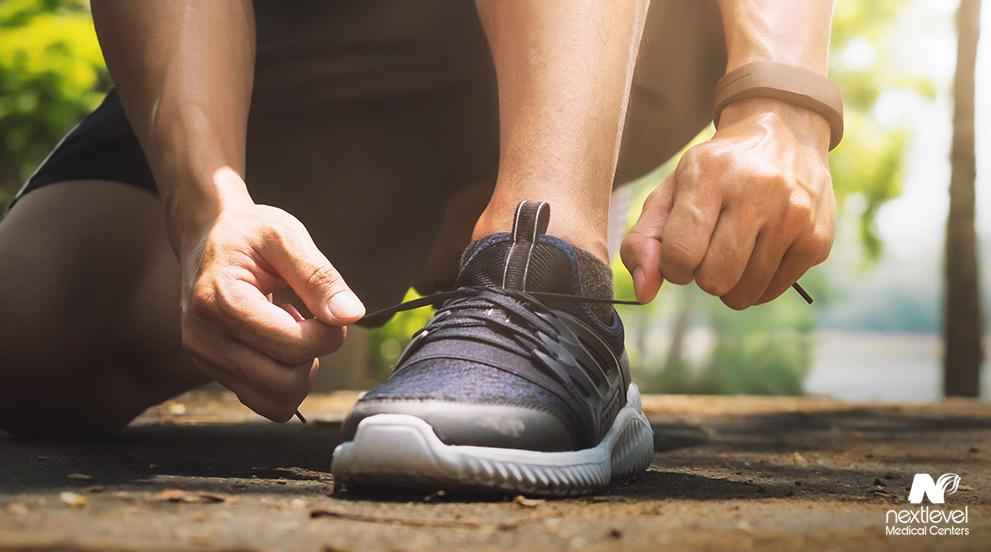
The key is to find a pair of shoes that will absorb the impact without amplifying it. However, the specific needs for your shoe will depend on your physical traits like height and weight. Therefore, it is hard to offer concrete guidance on purchasing a pair of running shoes. It might be in your best interest to spring for fitted running shoes to ensure that they work for your specific needs. However, ensuring the balance of padding is correct is the important part of ensuring that they do not do more harm than good.
Other forms of athletic footwear should be considered over sneakers. For example, compression footwear like knee sleeves can be used to offer additional support to the joint and reinforce it against potential trauma from your footfalls as you jog or run. This equipment can be on the pricy side but might give you that last bastion of protection against potential damage should you be the sort that is frequently exercising.
Stretching Can Improve Your Knees' Resistance to Impact
If you exercise regularly, you likely already know this, but for those who are beginners or are preemptively trying to prevent knee pain, you should know that stretching is a mandatory part of exercising. Before you run or jog, you should do some stretches to ensure that your body is adjusted to the physical exertion and is less rigid than it would otherwise be. Several proven stretches help limber your body up before engaging in physical exercises that will strain your legs.
Some common stretches to perform before a jog or run include:
Arm Swings: Stand in a central position and then use both arms similar to a windmill by swinging them to come up in front of you and go down behind you. Increase the size of the circles gradually as you perform this exercise.
Side Lunges: Stand with a wide stance with your feet pointing forward before bending your left knee and shifting your weight to the right. Slowly step to the right as you do.
Lateral Swings: Stand beside a wall and use it for support while standing on your right leg and lifting your left leg to swing out to the left.
Performing these stretches before a long walk, a run, or even a jog can help relax your knees and mitigate or prevent any damage from the coming exercise. You will also want to perform stretches after your jog to cool them back down. If knee pain is something you already have to deal with but you still want to go on your daily jog, there are a few stretches that exist to help mitigate pain from knee pain.
You will want to balance your stretches between dynamic stretches and static stretches to ensure you fully relax the limb. The dynamic stretches should be done before you go on your jog, and the static should be done after. However, these stretches might not be effective in the long term to completely alleviate the pain.
Knee Pain Treatment Exists
If knee pain is something you already find yourself enduring, then you might need something a little more comprehensive before you start going back to your daily jogs or walks. Fortunately, clinics and treatment facilities specialize in tending to knees and joints. If you want to avoid mainstream treatment avenues like surgery, Cortisol injections, or taking prescribed medications, there are less traditional avenues available to you.
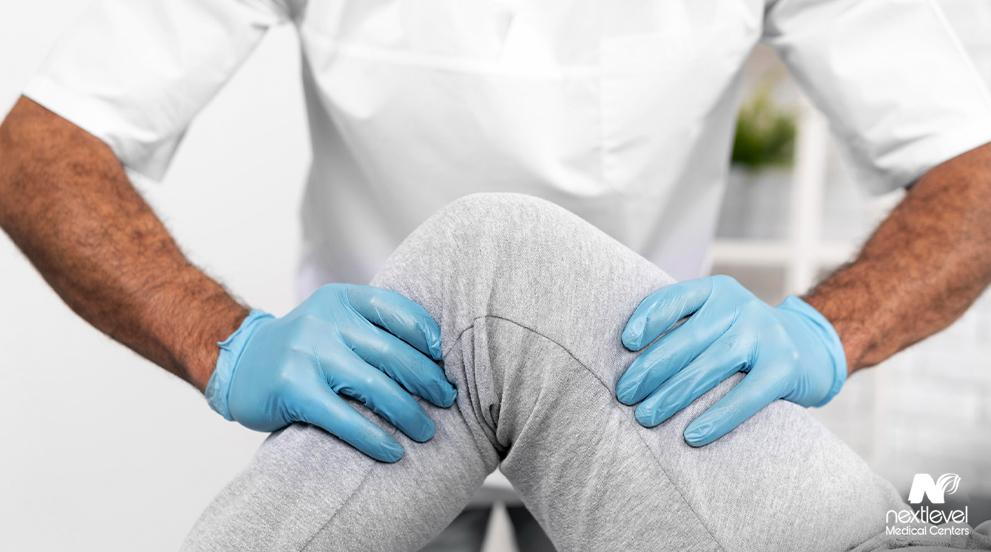
Taking advantage of personalized treatments for your knee pain can help you avoid expensive surgeries and unwanted drug prescriptions. There are therapeutic facilities in existence that specialize in helping patients who suffer from knee pain as a result of multiple underlying causes, including:
Sprains
Replacement surgery
Physical trauma
Osteoarthritis
Chronic pain
Bursitis
While some of these conditions might put an end to your jogging permanently depending on the severity, other more common causes can be treated by these clinics. Guided therapy can help to improve the mobility of the afflicted knee, reduce your overall pain, and make getting back to your daily life that much simpler. Knee treatment does not have to be invasive and can be just as effective for mitigating the pain caused by chronic knee pain.
Take Your Care to the Next Level
Knee pain is a widespread issue worldwide, and it can be debilitating for some. This means that taking measures to minimize or eliminate it is highly desirable to those who like to exercise regularly. Taking measures to stretch and maintain the proper posture is essential and can make a world of difference in protecting your knees from potential damage. However, if your knees have already been damaged to some capacity, it might not be enough to prevent the pain from becoming worse. Sometimes, you simply need to seek the proper treatments to minimize the pain and reclaim your old habits.
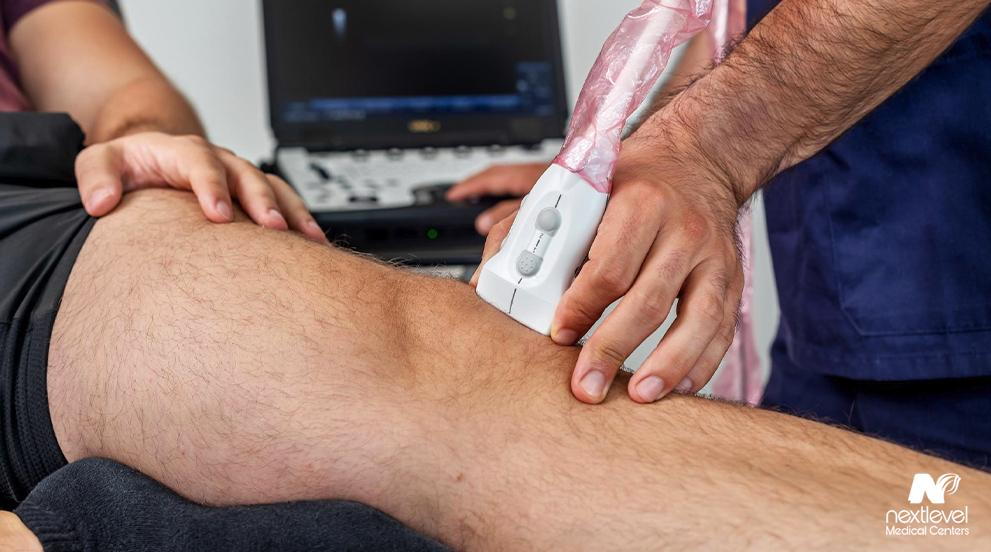
For that, we at Next Level Health would like to offer our services. We offer a proprietary KneeSpa program that works to tend to pain and damage of the knees for all the conditions listed above and then some. With programs developed from the minds of licensed professionals like Dr. Emmett Blahnik, we can offer quality care for many physical ailments. So, contact us today and take your health to the Next Level.
If you have any questions or concerns regarding knee pain you may be experiencing, the services we can provide, or anything similar, please feel free to reach out and contact us at any time. Finding the best method to manage your knee pain is a serious task, and we would be more than happy to assist you however we can.